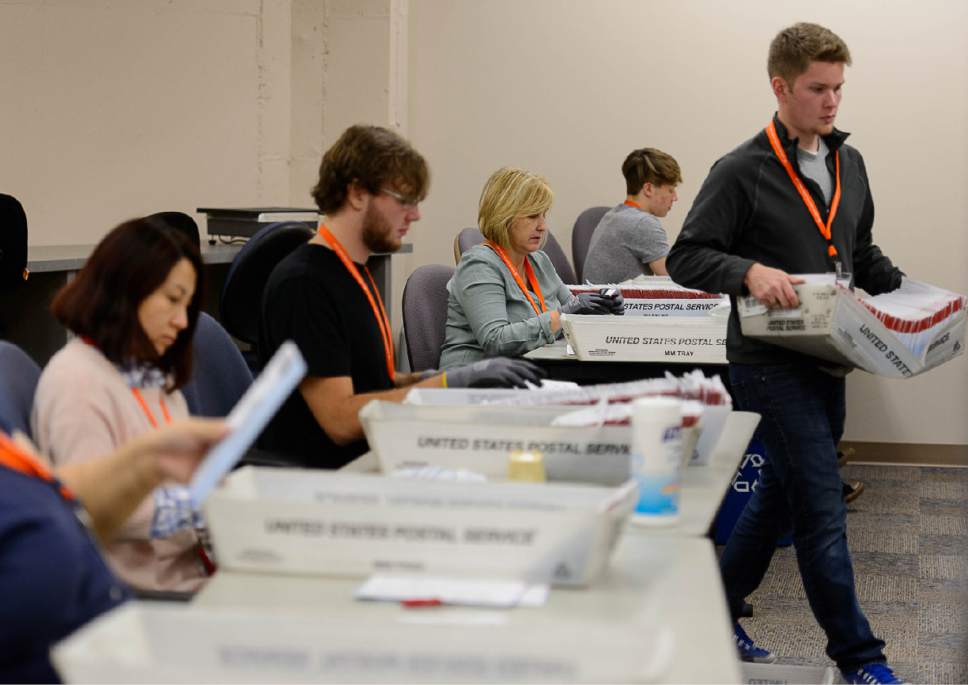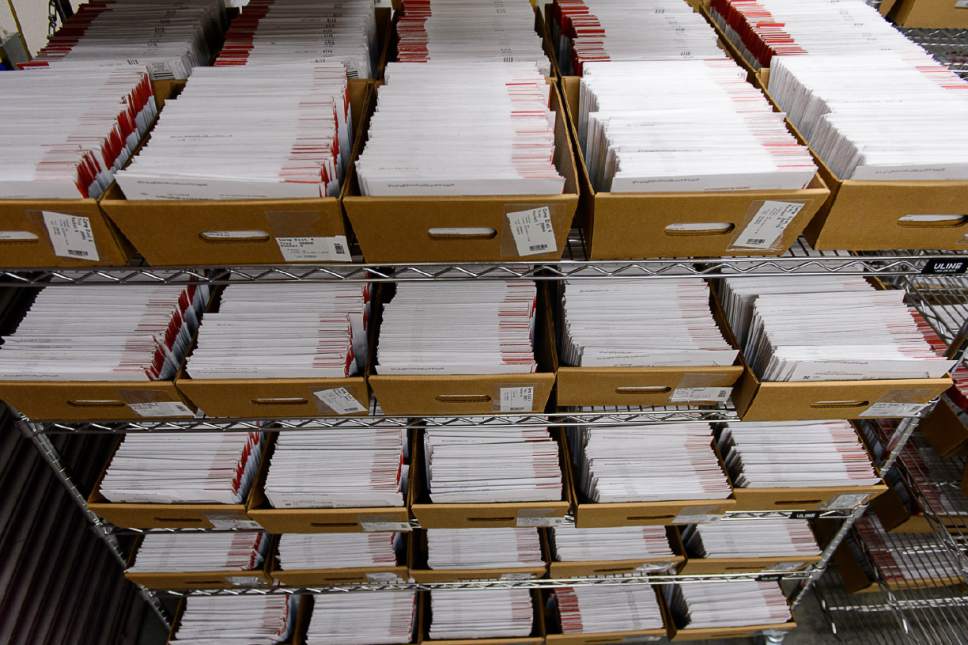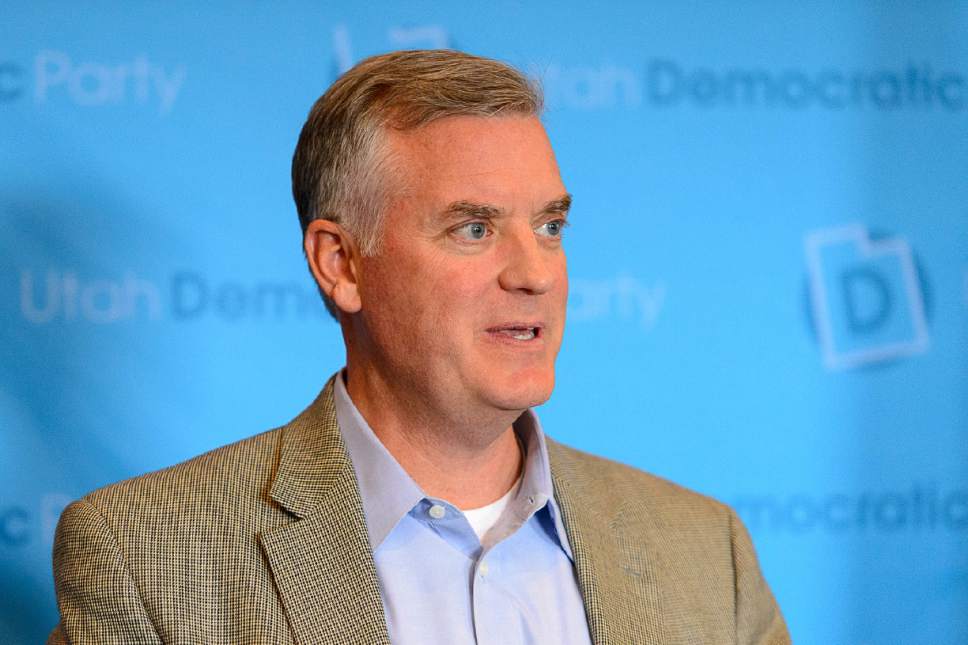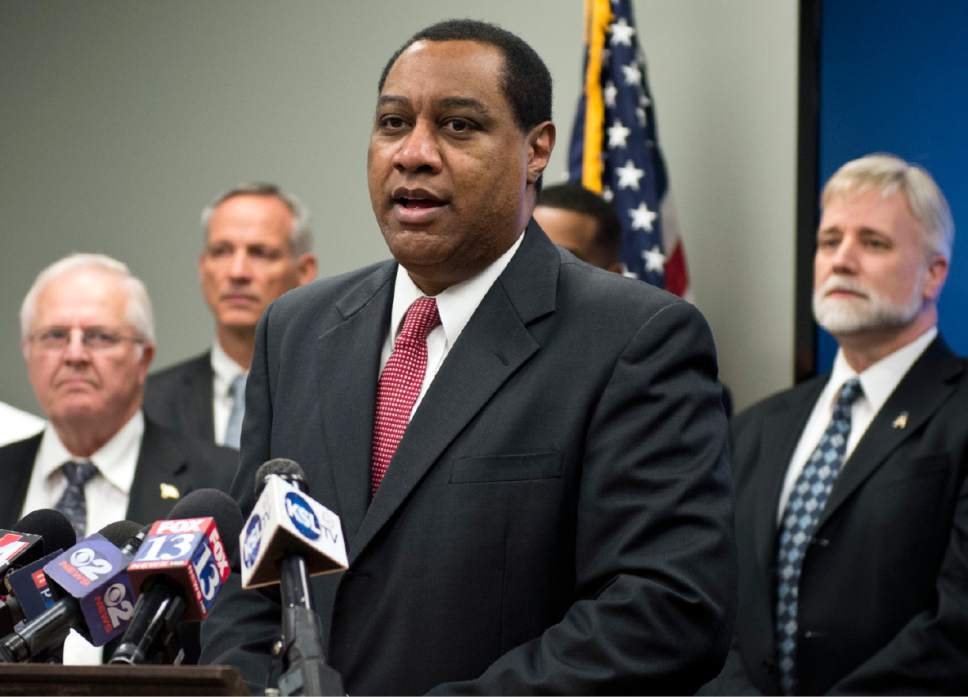This is an archived article that was published on sltrib.com in 2016, and information in the article may be outdated. It is provided only for personal research purposes and may not be reprinted.
About a third more Utah Democrats have voted so far than normally would be expected in early turnout for by-mail voting — while fewer-than-predicted Republicans are casting ballots.
"That shows us there is an excitement amongst Democrats," Utah Republican Party Chairman James Evans concedes, while "there is a frustration level amongst Republicans" with Donald Trump atop their ticket.
He says the situation is giving the Utah GOP some heartburn over how that will affect other state and local races.
So Evans is glad that, several months ago, his party decided to skip its normal Plan A or even Plan B about how to get out the vote and went straight to a "Plan T" developed just for this unusual presidential election year.
In June, when Evans was asked if the "T" in "Plan T" stood for Trump, he smiled and said, "It may or may not be a coincidence." But now he says it stands for "turnout," and how to motivate Republicans who may not like Trump to vote anyway to help other GOP candidates.
"The first stage of Plan T is good data collection, and knowing who has voted and who hasn't," Evans said. "We know who we need to get to the polls to win. And we can see if they have voted, and where we need to target our resources."
Through Monday afternoon, he noted that about 82,000 Utahns have cast ballots in the 21 of 29 counties now conducting the election by mail. More than 67,000 of those votes have come in Salt Lake County.
The lieutenant governor's office releases name-by-name information about who has mailed back ballots — but, of course, not how they vote — and both parties watch that closely to encourage friendly voters to cast their ballots.
Parties have lists of who is registered as a Republican or Democrat. And for the large numbers of unaffiliated voters in the state, they also have developed lists of how they think each typically votes based on information collected through such things as polling or donations.
In Salt Lake County, Evans said about 16 percent of voters are registered Democrats — but they have cast 22 percent of the votes in the county.
And 42 percent of Salt Lake County voters are Republicans, but they have cast 36 percent of the vote. "So they are up by six points, and we are down by six points," Evans said. "That's a swing of about 8,200 votes."
He said the remaining 42 percent of votes cast are from the unaffiliated, whom he sees as swing voters, and they are casting ballots "in about the numbers you would expect."
Evans added, "Now it's time for all Republicans to come together and all focus in on getting our Republicans to the polls. … We know who needs to vote. I'm saying this in a respectful way: We need to drag them to the polls."
That means Republicans who haven't voted likely can expect plenty of contact in coming days.
Perhaps underscoring how tough this election could be for Republicans: As Evans talked to The Salt Lake Tribune, a woman passing his office delivered a hard slap to a pro-Trump sign attached to a window at GOP headquarters.
Evans said he is not too worried about the effect of depressed GOP voting in congressional races because leads in those contests seem strong.
He is more concerned about local and legislative races in Salt Lake County, saying excitement in the other party could help Democrats win some close races — such as three House districts that Democrats thought they had won on election night last time, but lost after the final canvass days later.
Utah Democratic Party Chairman Peter Corroon said his party's analysis of turnout mirrors that of Republicans, but he said it is too early to declare any firm trends.
"Only about 80,000 people have voted so far, out of about 1 million who are expected to vote," Corroon said. But he does expect 2016 to "be a good year for Democrats in Utah."
With polls showing a roughly three-way split among Trump, Hillary Clinton and independent Evan McMullin, "Utah is a competitive state in the presidential election" and Democrats who for years had no hope of their nominee winning here "now realize their vote can make a difference."
Also, "With Trump on the ballot, many are looking for an alternative, and we're excited that some are looking at Hillary Clinton," Corroon said. "Other Democratic candidates are also receiving votes from Republicans that they otherwise would not receive" because fewer Republicans are voting a straight-party ticket.
This is the first year when most of Utah is voting by mail, and both major-party leaders said that gives them more time to identify supporters who have yet to vote and to prod them to do so.
In past years, the parties had only a few hours on Election Day to attempt that.
Now, they have several weeks. Evans said that longer period became a key part of his "Plan T" to work to identify such voters and plead for their help.









